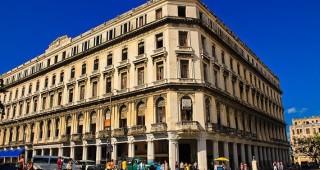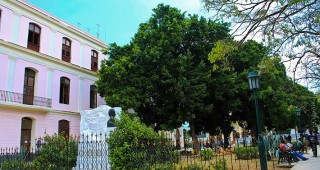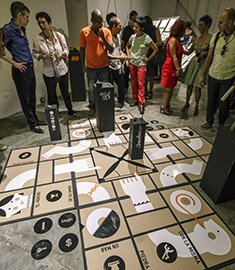
Manzana de Gómez LH  4
4
Owned by Julián de Zulueta, construction work began in 1890 according to the project designed by architect Pedro Tomé Veracruisse; however, still unfinished, it was sold to Andrés Gómez Mena, who comp …
 EclecticAdmission: n-aLimited by Neptuno, Monserrate, Obispo and Zulueta Streets, Habana Vieja
EclecticAdmission: n-aLimited by Neptuno, Monserrate, Obispo and Zulueta Streets, Habana Vieja 
Avenida Paseo LH  4
4
Avenida Paseo, with large trees on both sides and a wide promenade with topiary and benches, is one of Havana’s most classy streets. There are luxurious mansions on both sides of the street, including …

Palacio Cueto LH  4
4
Rising over the plaza off the southeast corner is Palacio Cueto. Built in 1906 with an elaborately adorned façade featuring griffins, satyrs and other mythical figures, it’s reminiscent of the moderni …
 Art NouveauMercaderes esq. a San Ignacio, Habana Vieja
Art NouveauMercaderes esq. a San Ignacio, Habana Vieja 
Palacio del Conde Lombillo LH  4
4
Located on the north-east corner of the Plaza de la Catedral, this mid18th-century building is unusual in having three façades: the main one on Empedrado and the other two facing Mercaderes and the sq …

Museo del Automóvil LH  4
4
One block east of the plaza, the State-run Museum of Automobiles, previously known as the Depósito del Automóvil, showcases a collection of almost 50 vehicles from 1905 to 1989, includes cars, trucks, …

Sloppy Joe’s Bar LH  5-
5-
6pm is Sloppy Joe cocktail hour again at the original Sloppy Joe’s saloon, an iconic Cuban bar that reopened Friday April 12, 2013 after a nearly 50-year break in its original location. The restoratio …
 Traditional BarÁnimas, esq. Zulueta La Habana Vieja
Traditional BarÁnimas, esq. Zulueta La Habana Vieja 
Fototeca de Cuba LH  4
4
Inaugurated in 1986 to preserve, study and promote Cuba’s photographic heritage, Fototeca de Cuba, mid-way along the east side of the plaza, boasts the nation’s largest, most valuable collectio …

Plaza del Cristo LH  4
4
The mid-17-century plaza takes its name from the Iglesia del Santo Cristo del Buen Viaje. It was first known as Plaza Nueva taking the name of what is now known as Plaza Vieja. For a while it was know …

Convento y Capilla de la Inmaculada Concepción LH  4
4
This beautiful church and convent was built in Neo=\-Gothic style in 1874 and was a private girls’ school until 1961. The patio and chapel have beautiful wooden ceilings, notable stained-glass windows …
 OtherOpen: 8am-5pm Mon-Fri; 5-7pm Sat; 8-11am SunSan Lázaro #805 entre Oquendo y Lucena
OtherOpen: 8am-5pm Mon-Fri; 5-7pm Sat; 8-11am SunSan Lázaro #805 entre Oquendo y Lucena 
El Caballero de París LH  4
4
Dozens of passers-by on Oficios are drawn every day to the life-size bronze statue of this humbly dressed man that stands outside the entrance to the basilica. Approach it and you will see that his lo …













